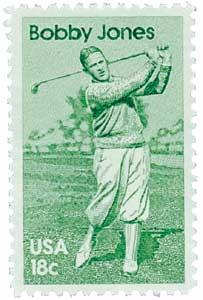
# 3185n - 1998 32c Celebrate the Century - 1930s: Bobby Jones Grand Slam
32¢ Bobby Jones Wins Grand Slam
Celebrate the Century – 1930s
City: Cleveland, OH
Quantity: 12,533,000
Printed By: Ashton–Potter (USA) Ltd
Printing Method: Lithographed, engraved
Perforations: 11.5
Color: Multicolored
Birth Of Bobby Jones
Jones suffered from a number of health issues as a child and it was suggested he play golf to build his strength. He loved the sport from the first time he swung a club and won his first children’s tournament when he was just six years old.
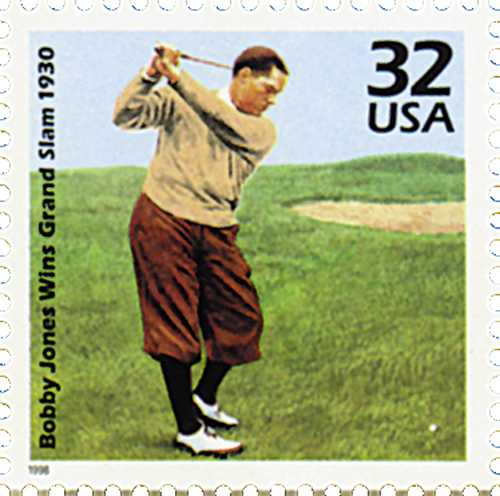
In 1916, Jones won his first major competition, the Georgia Amateur Championship. That victory earned him national attention and his first invitation to the US Amateur Championship that year in Pennsylvania. He made it to the quarterfinals in that competition.
During World War I, Jones toured the US playing in exhibition matches to raise money for the war effort. This gave him lots of experience playing in front of large crowds. In 1919 and 1920, Jones won two international amateur team matches against Canada. He also played his first major matches outside the US and won the Southern Amateur three times. He qualified for his first US Open in 1920 when he was just 18, and first won the prestigious competition in 1923.
By the time Jones had reached his early twenties, he was at the top of the golf world. He had not only dominated every amateur tournament, he had also won every major tournament on the professional tour. Between 1923 and 1930, he won 13 major championships. In 1926, he was the first player to win the Double (the US and British Opens) in the same year.
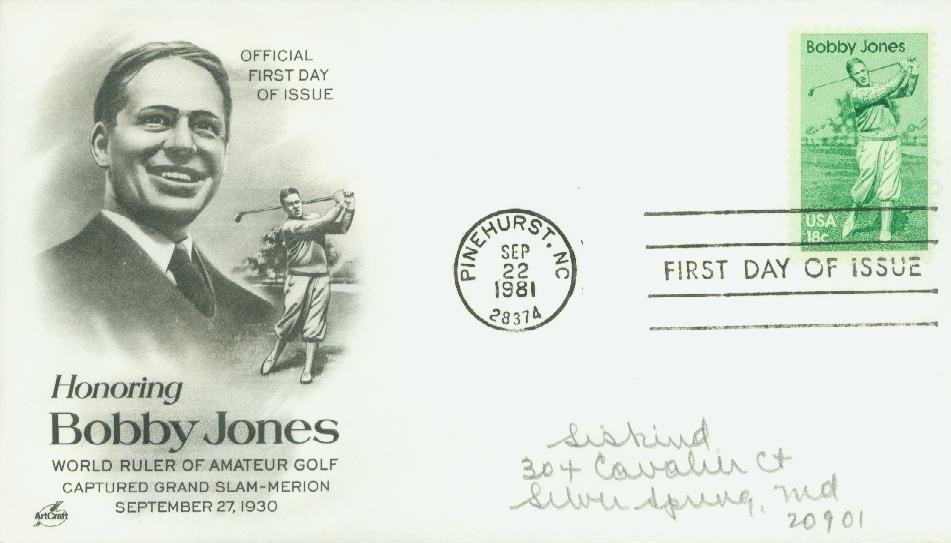
In 1930, Jones won all four major tournaments (the Amateur Championship, British Open, US Open, and UA Amateur) achieving the first Grand Slam in golf history. Jones also represented the US in the Walker Cup five times, winning nine of his ten matches. During his career, Jones won four US Open championships and finished second four more times. He also won three of the four British Open championships in which he competed.
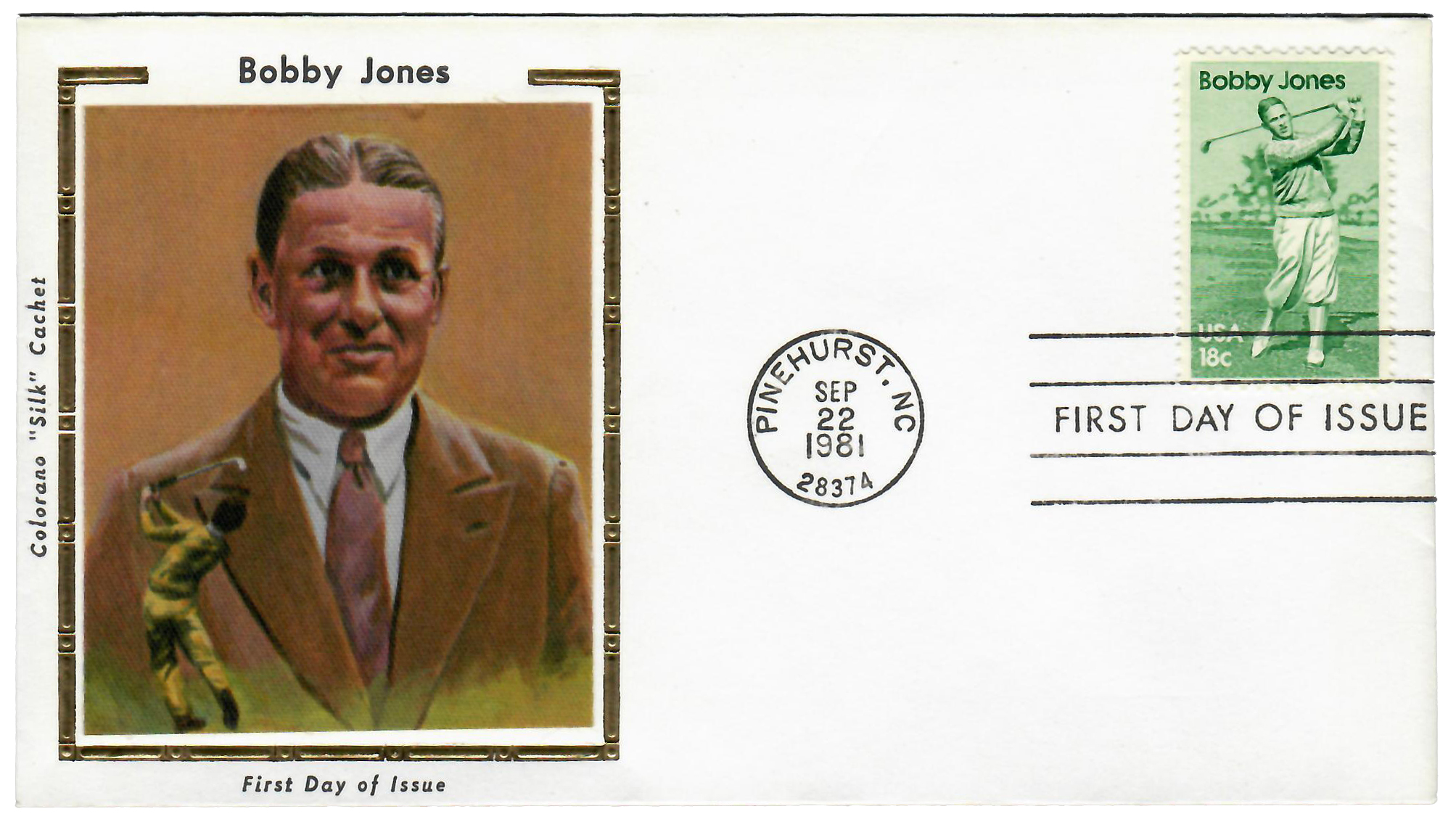
Jones dominated the sport while keeping his amateur status, and never became a professional golfer. While he played his way to the top of his sport, he earned a degree in English Literature from Harvard, attended Emory University School of Law, and passed the Georgia bar exam after just three semesters. He worked as a lawyer while winning some of golf’s highest honors – he considered golf a hobby and played because he loved the game.
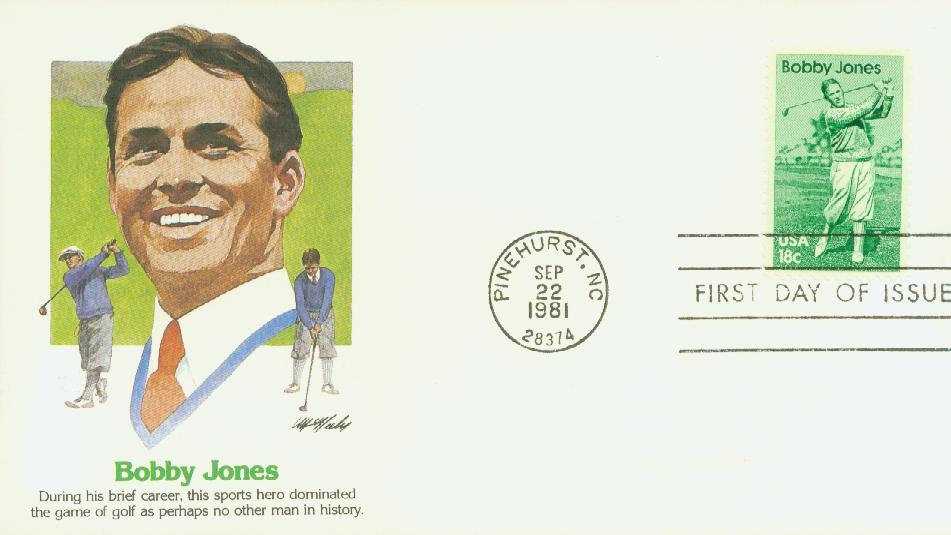
Jones was one of the five giants of American sports in the 1920s. He was the first person to receive the AAU’s Sullivan Award for top amateur athlete in the US. He was also the only athlete to receive two ticker-tape parades in New York City (1926 and 1930).
Jones retired from golf competition when he was 28 and focused more time on his law practice. However, he continued his involvement with the sport. He made instructional golf videos, wrote for magazines, and helped design a set of popular golf clubs.
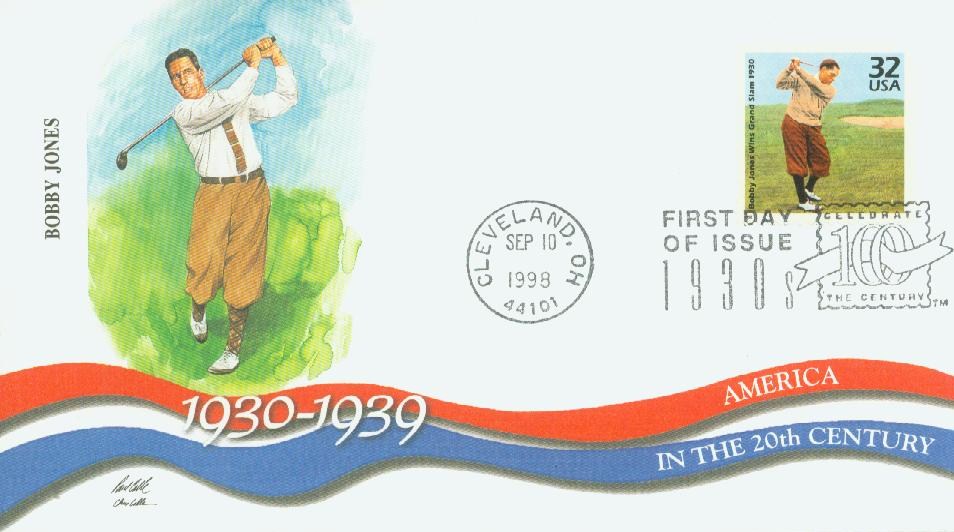
Jones still enjoyed playing golf casually, but he was very famous and recognized everywhere he went. He wanted a place to play golf in peace and quiet, so he designed the Augusta National Golf Club, which opened in 1933. Jones also created the Masters Championship that is played there each year.
Jones joined the US Army Air Corps during World War II. His officers wanted him to play exhibition golf, but he insisted on serving overseas. Jones served as an intelligence officer with the 84 Fighter Wing. In 1944, he spent two months near the front lines interrogating prisoners of war in Normandy.
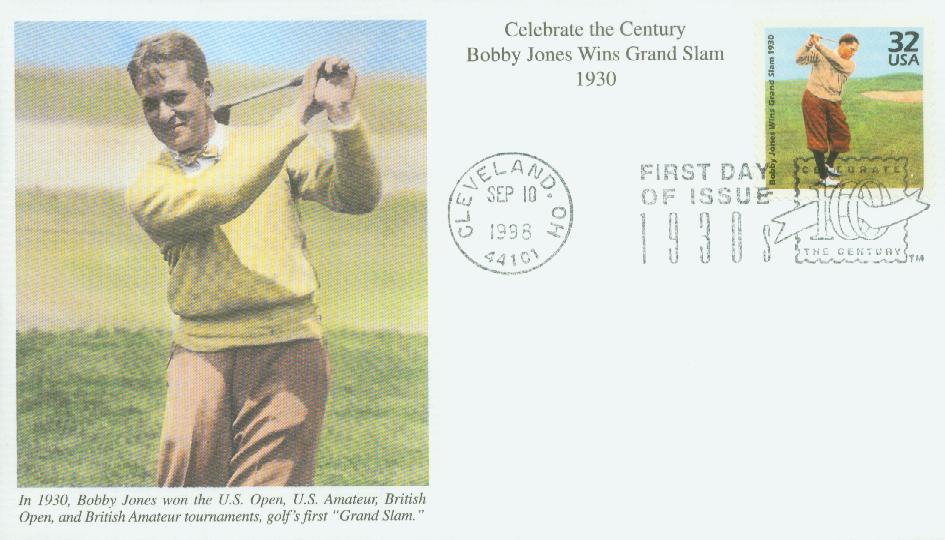
After the war, Jones returned to hosting the Masters at his Augusta golf course. Over the years, the Masters made many innovations that would be instituted at other golf competitions. It also became one of the most respected tournaments in the world and one of the four major championships in professional golf. However, Jones’ health began to decline and he was soon restricted to a wheelchair. He died on December 18, 1971.
Jones was inducted into the World Golf Hall of Fame in 1974 and the USGAs sportsmanship award was named in his honor.
32¢ Bobby Jones Wins Grand Slam
Celebrate the Century – 1930s
City: Cleveland, OH
Quantity: 12,533,000
Printed By: Ashton–Potter (USA) Ltd
Printing Method: Lithographed, engraved
Perforations: 11.5
Color: Multicolored
Birth Of Bobby Jones
Jones suffered from a number of health issues as a child and it was suggested he play golf to build his strength. He loved the sport from the first time he swung a club and won his first children’s tournament when he was just six years old.

In 1916, Jones won his first major competition, the Georgia Amateur Championship. That victory earned him national attention and his first invitation to the US Amateur Championship that year in Pennsylvania. He made it to the quarterfinals in that competition.
During World War I, Jones toured the US playing in exhibition matches to raise money for the war effort. This gave him lots of experience playing in front of large crowds. In 1919 and 1920, Jones won two international amateur team matches against Canada. He also played his first major matches outside the US and won the Southern Amateur three times. He qualified for his first US Open in 1920 when he was just 18, and first won the prestigious competition in 1923.
By the time Jones had reached his early twenties, he was at the top of the golf world. He had not only dominated every amateur tournament, he had also won every major tournament on the professional tour. Between 1923 and 1930, he won 13 major championships. In 1926, he was the first player to win the Double (the US and British Opens) in the same year.

In 1930, Jones won all four major tournaments (the Amateur Championship, British Open, US Open, and UA Amateur) achieving the first Grand Slam in golf history. Jones also represented the US in the Walker Cup five times, winning nine of his ten matches. During his career, Jones won four US Open championships and finished second four more times. He also won three of the four British Open championships in which he competed.

Jones dominated the sport while keeping his amateur status, and never became a professional golfer. While he played his way to the top of his sport, he earned a degree in English Literature from Harvard, attended Emory University School of Law, and passed the Georgia bar exam after just three semesters. He worked as a lawyer while winning some of golf’s highest honors – he considered golf a hobby and played because he loved the game.

Jones was one of the five giants of American sports in the 1920s. He was the first person to receive the AAU’s Sullivan Award for top amateur athlete in the US. He was also the only athlete to receive two ticker-tape parades in New York City (1926 and 1930).
Jones retired from golf competition when he was 28 and focused more time on his law practice. However, he continued his involvement with the sport. He made instructional golf videos, wrote for magazines, and helped design a set of popular golf clubs.

Jones still enjoyed playing golf casually, but he was very famous and recognized everywhere he went. He wanted a place to play golf in peace and quiet, so he designed the Augusta National Golf Club, which opened in 1933. Jones also created the Masters Championship that is played there each year.
Jones joined the US Army Air Corps during World War II. His officers wanted him to play exhibition golf, but he insisted on serving overseas. Jones served as an intelligence officer with the 84 Fighter Wing. In 1944, he spent two months near the front lines interrogating prisoners of war in Normandy.

After the war, Jones returned to hosting the Masters at his Augusta golf course. Over the years, the Masters made many innovations that would be instituted at other golf competitions. It also became one of the most respected tournaments in the world and one of the four major championships in professional golf. However, Jones’ health began to decline and he was soon restricted to a wheelchair. He died on December 18, 1971.
Jones was inducted into the World Golf Hall of Fame in 1974 and the USGAs sportsmanship award was named in his honor.







